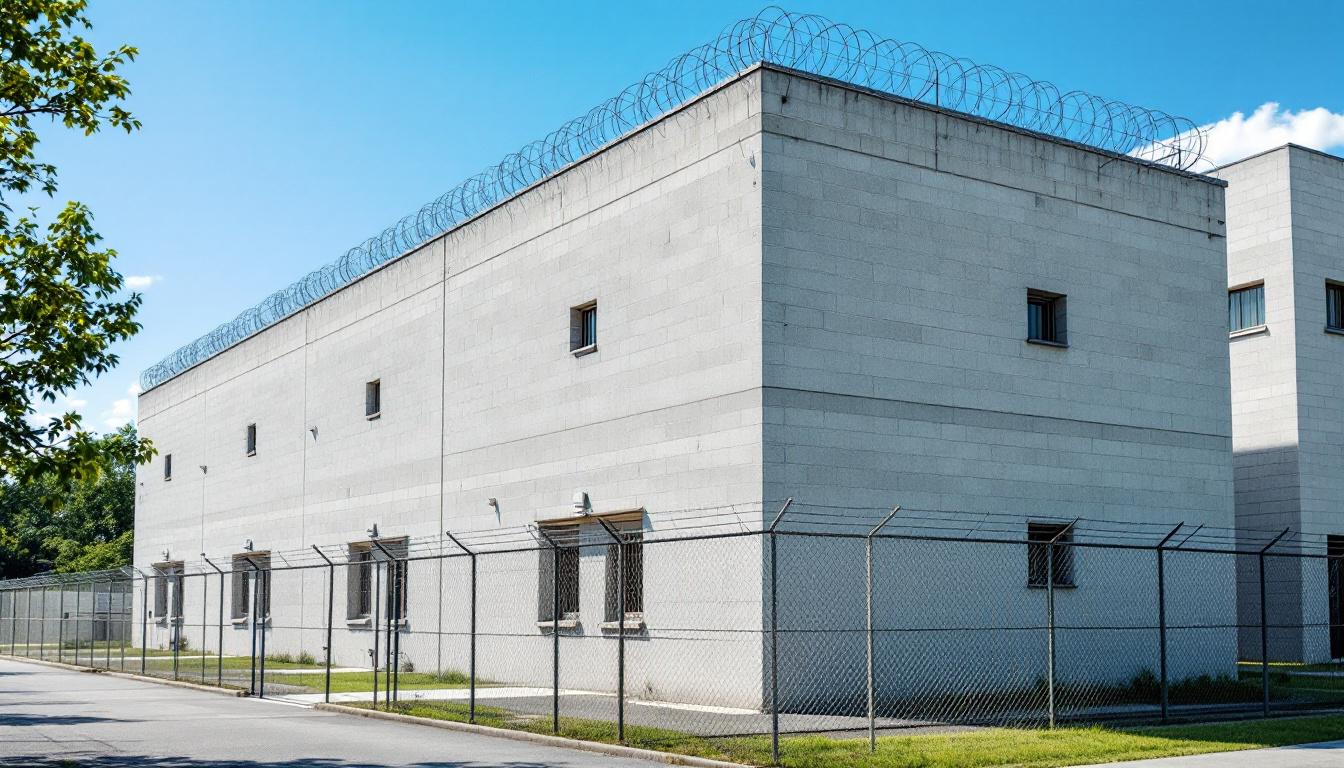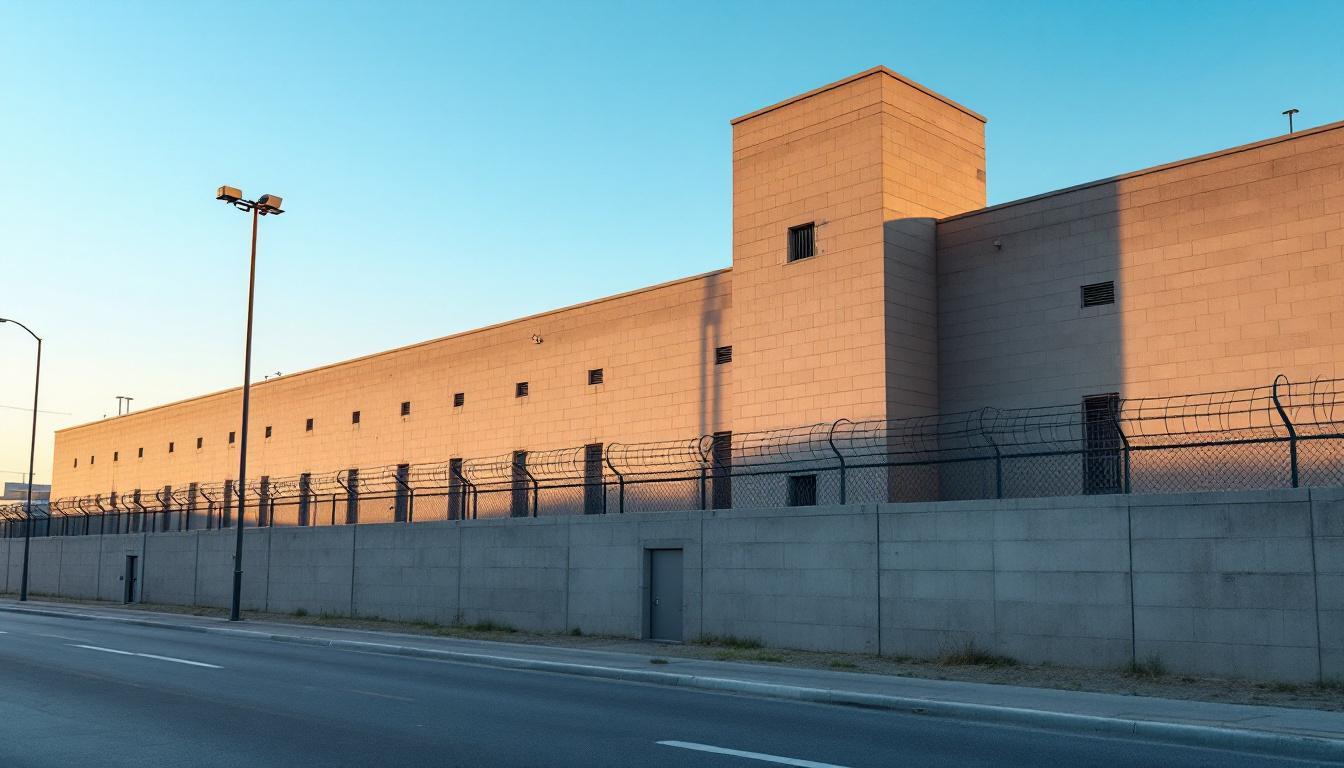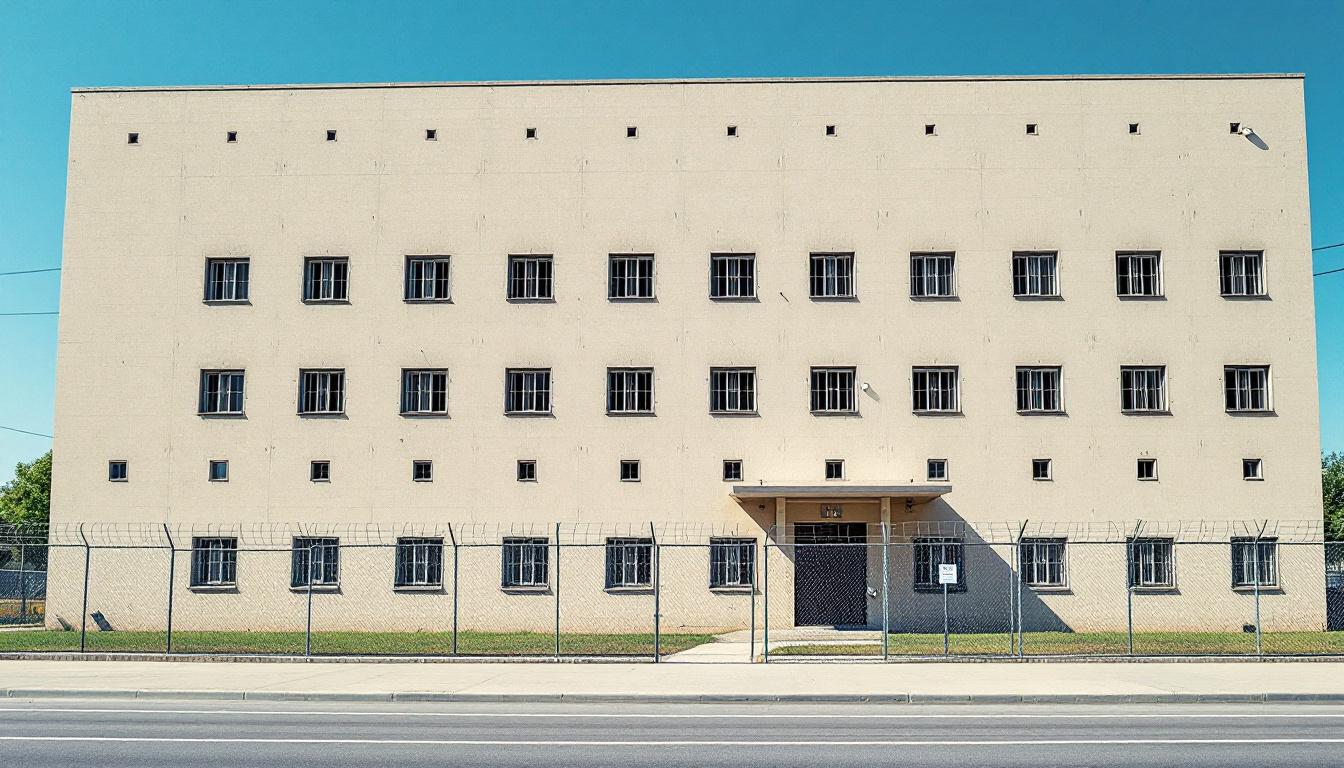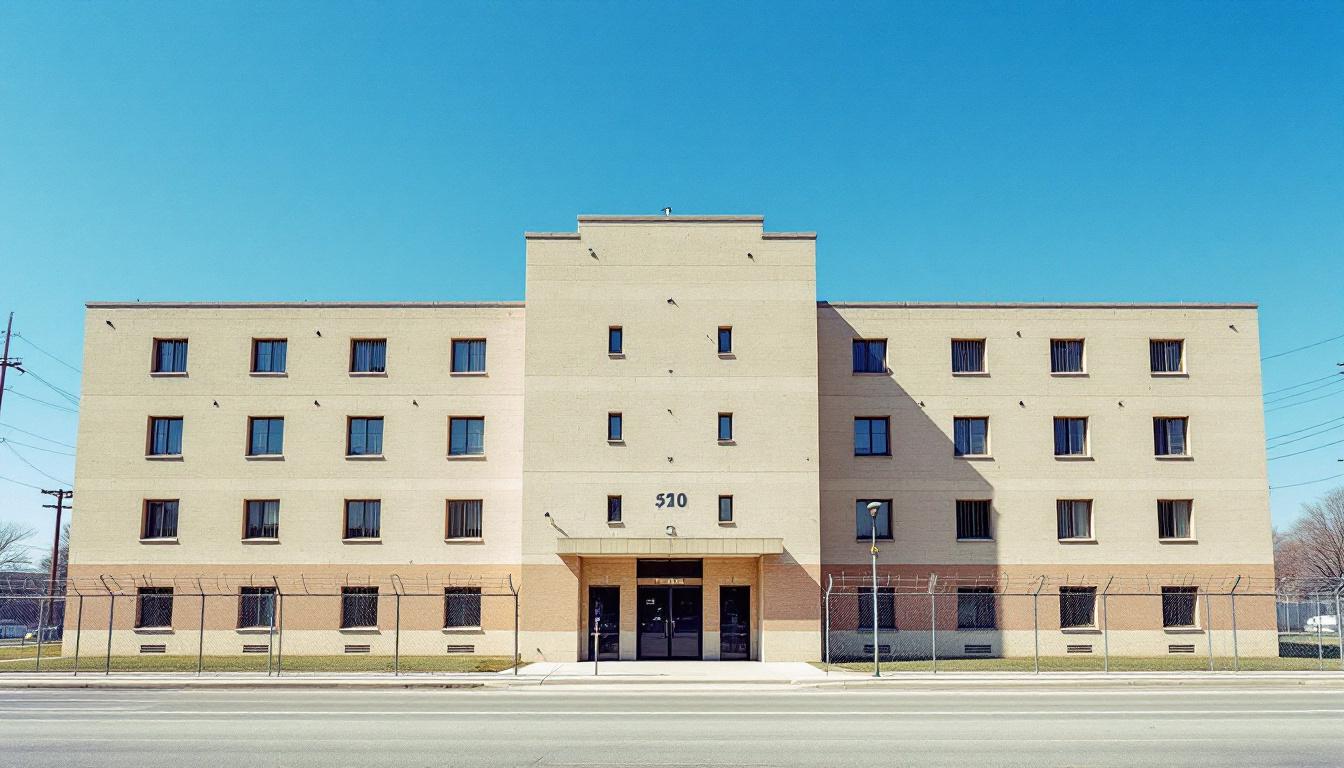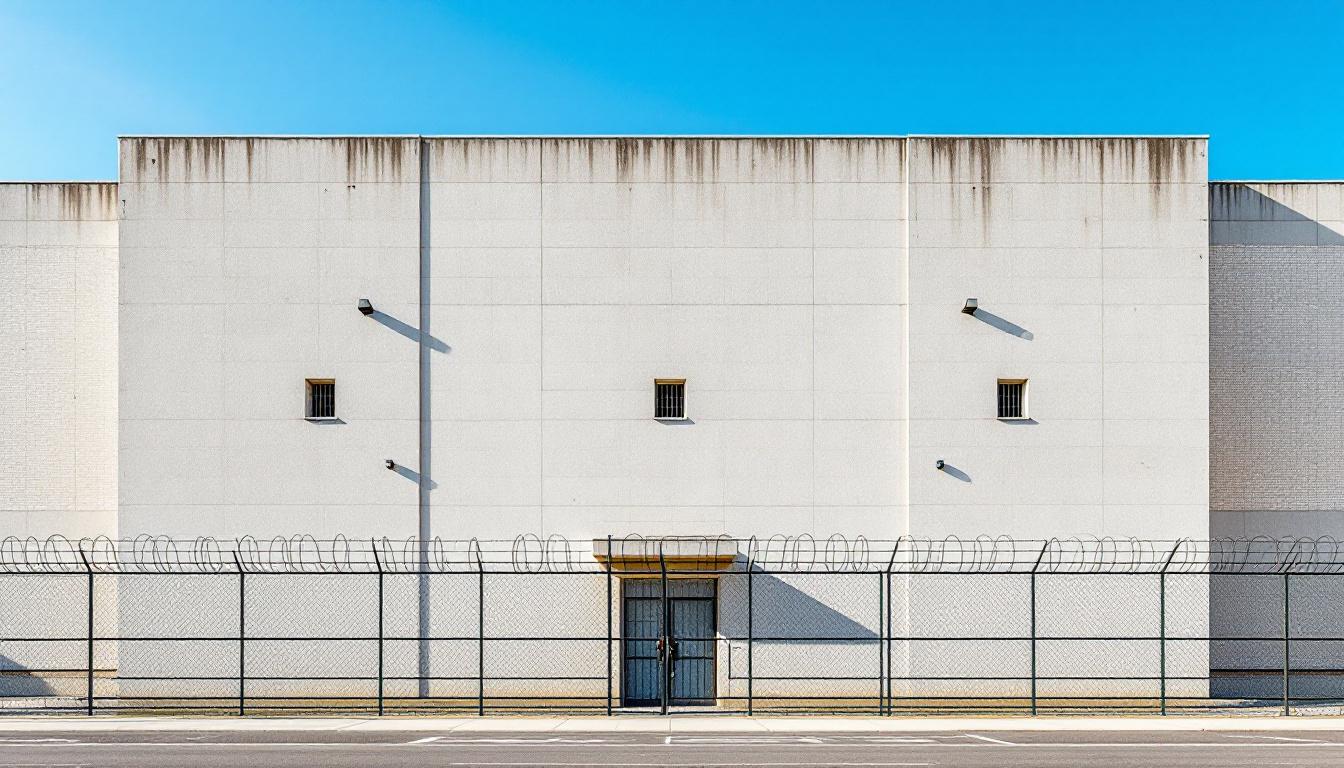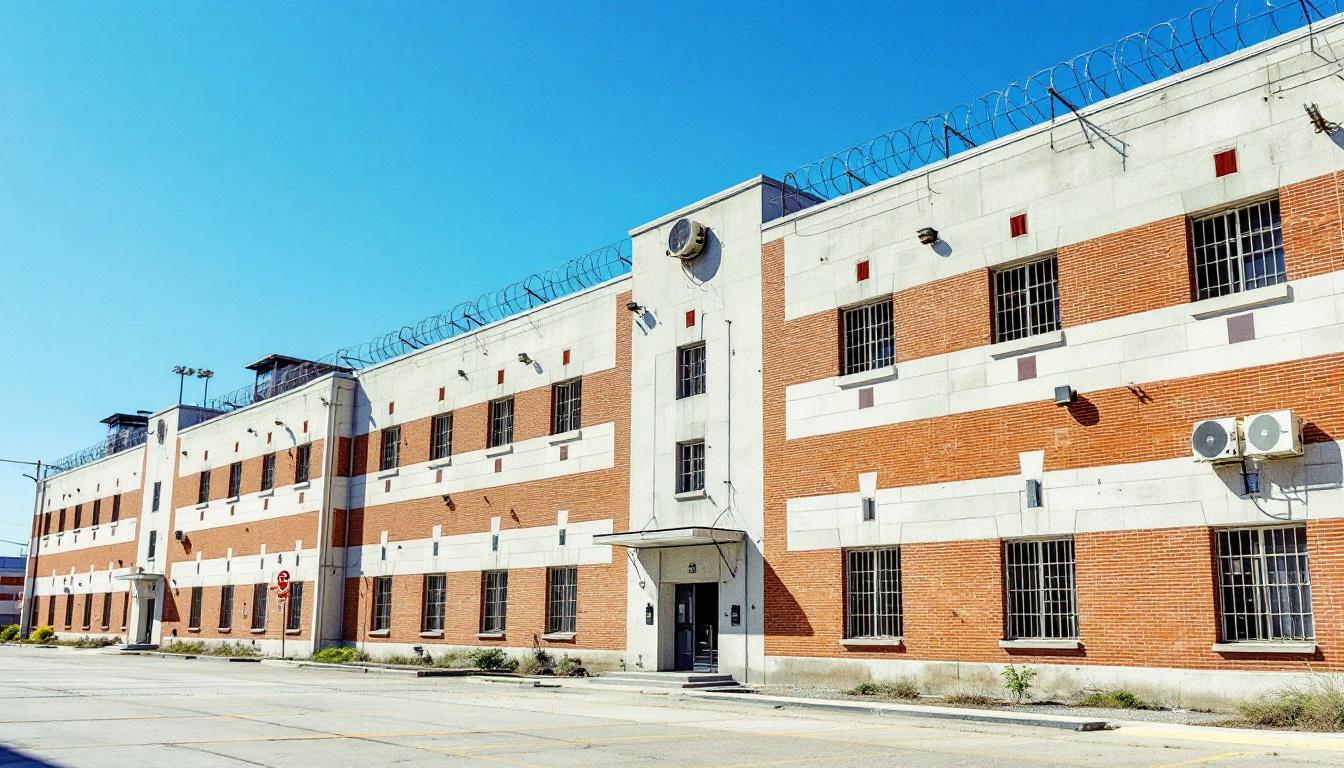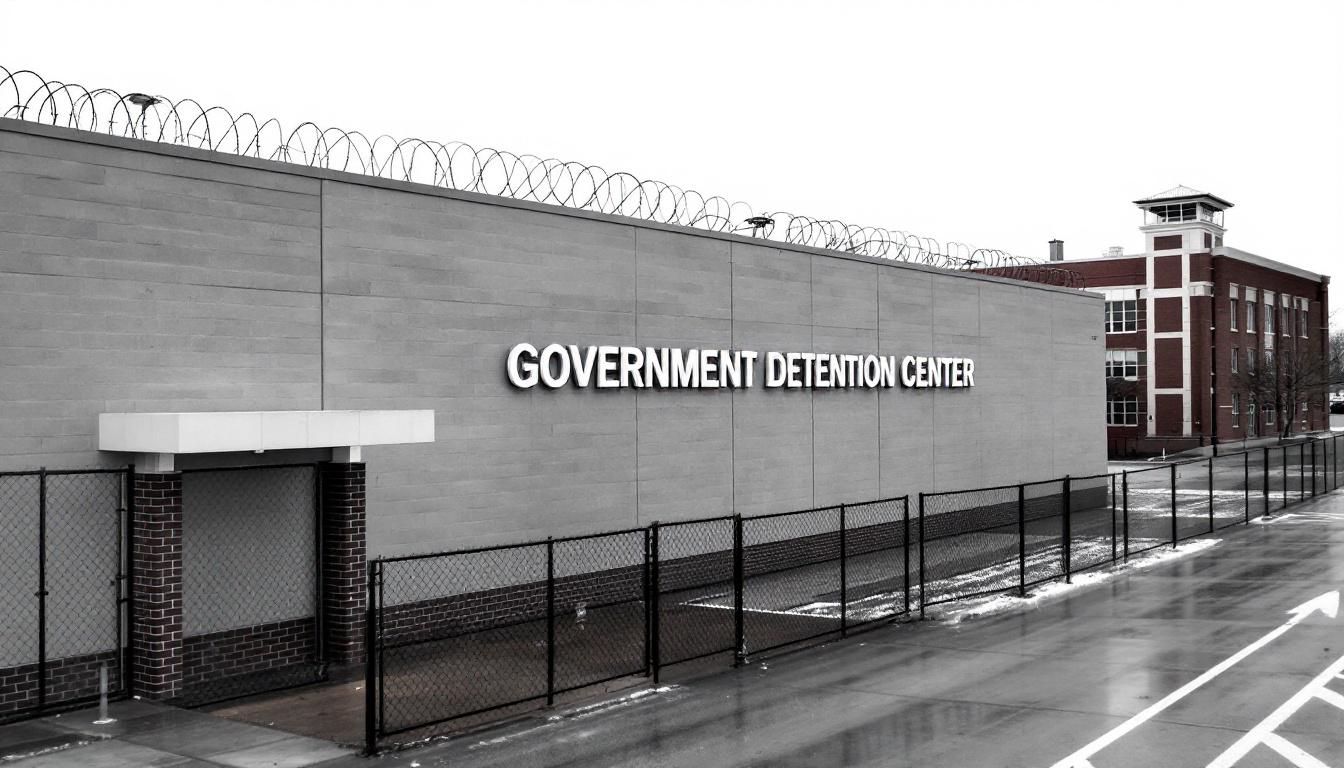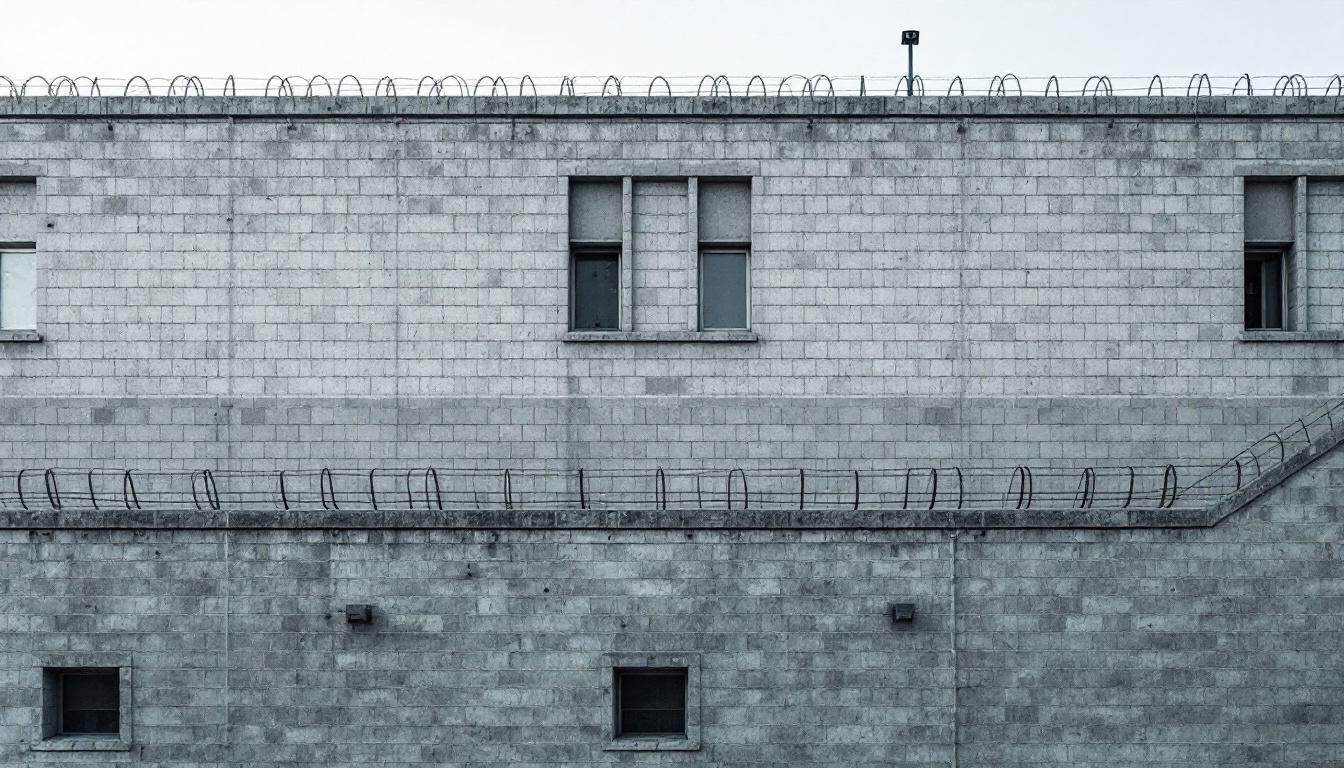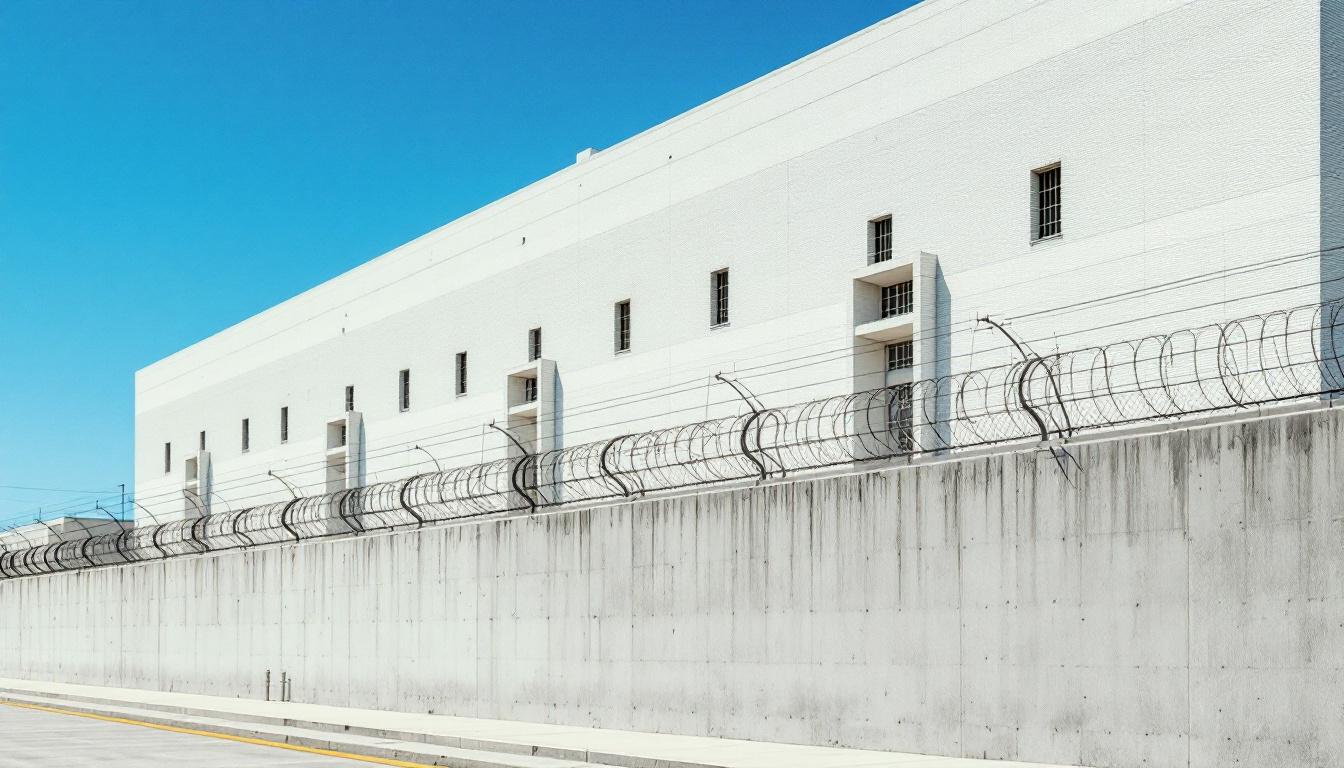
Quick Navigation
How to contact an inmate at Dodge Detention Facility
This comprehensive guide will walk you through how to connect with an inmate at Dodge Detention Facility. Follow the steps below to find an inmate and send letters and photos:
- Search for the inmate using our search tool below
- Create your account or log in to Penmate
- Write your message (up to 6,000 characters)
- Send instantly - inmates receive printed copies daily
Find an Inmate
Search for an inmate to start communicating today
Tip: You can search by first name, last name, or inmate ID number
To contact a person at Dodge Detention Facility start by searching for the person on the official facility website. Perform a search by following these steps:
- Step 1: Enter their first name and last name into the search form and click "Search"
- Step 2: Locate their inmate record
- Step 3: Write down their Inmate ID and any housing information provided
Important! Be sure to enter the person's full name. Nicknames should not be used.
How to Send Messages to Inmates

You can use your phone or computer to send emails, letters, and photos to an inmate. Messages are sent electronically to inmate tablets or kiosks at the facility. If you would like to send a message, start by searching for an inmate at Dodge Detention Facility.
Sending Photos and Postcards

A great way to send love and support to a loved one at Dodge Detention Facility is to send photos and postcards. It only takes a few minutes to send photos from your phone and it makes a huge difference. You can also mail postcards with words of support and inspiration, or design your own postcard for special moments like birthdays and holidays.
Important! Be sure not to send any explicit photos or they may not be approved by the facility. You can also use a photo printing app like Penmate to make sure your photos are printed at the correct size (4x6 or 3x5) and are mailed according to the rules and regulations of Dodge Detention Facility.
Frequently asked questions about Dodge Detention Facility
-
How long does it take to deliver a message?
If you're sending an email message your letter is usually delivered within 24-48 hours. For messages sent via mail you should expect delivery within 3-7 days. All messages will need be approved by Dodge Detention Facility.
-
How much does it cost to send a message to Dodge Detention Facility?
You can send a message free using your phone or mail a message via USPS for the price of a $0.60 stamp and envelope. You can also purchase credits or e-stamps from services starting at $1.99.
-
What services can I use to contact an inmate at Dodge Detention Facility?
Penmate
You can use Penmate to send letters and photos to an inmate from your phone. It's an easy way to stay in touch during your loved one's incarceration. Use the inmate locator to find an inmate's location and contact information, then you can send messages within a few minutes.
Securus messaging
Securus may be another option for communicating with an inmate at Dodge Detention Facility. You can create a friends and family account and purchase credits to send messages. All messages will be reviewed and must be approved by the facility.
JPay
Some county jails and state prisons may support sending messages with JPay. You must register an account with the system, find your loved one, and purchase stamps to send messages. For some locations you can also attach photos.
Smart Jail Mail
You may also check if Smart Jail Mail is available at Dodge Detention Facility. Smart Jail Mail is operated by Smart Communications and has contracted with some state and county jails. After purchasing credits, your messages and photos are sent to the facility, printed out, and then handed out to your loved one.
-
What is the mailing address of Dodge Detention Facility?
Mailing address:
Dodge Detention Facility
216 W Center St
Juneau, WI 53039
Phone: (920) 386-3734 -
What are the visiting hours at Dodge Detention Facility?
Visiting hours at Dodge Detention Facility vary by housing unit and security level. Generally, visits are scheduled on weekends and holidays, with some facilities offering weekday visits. Contact the facility directly at (920) 386-3734 or check their website for the current visiting schedule. Visits typically last 30-60 minutes and must be scheduled in advance.
-
What items are prohibited when sending mail to Dodge Detention Facility?
Prohibited items typically include: cash, personal checks, stamps, stickers, glitter, glue, tape, staples, paperclips, polaroid photos, musical or blank greeting cards, hardcover books, magazines with staples, and any items containing metal or electronics. Only send letters on plain white paper with blue or black ink. Photos must be printed on regular photo paper (no Polaroids). Always check with Dodge Detention Facility for their specific mail policies.
-
How do I send money to an inmate at Dodge Detention Facility?
You can send money to an inmate at Dodge Detention Facility through several methods: 1) Online using JPay, Access Corrections, or the facility's approved vendor, 2) Money orders mailed directly to the facility with the inmate's name and ID number, 3) Kiosks located in the facility lobby, or 4) Over the phone using a credit or debit card. Fees vary by method, typically ranging from $2.95 to $11.95 per transaction.
-
Can I schedule a video visit with an inmate at Dodge Detention Facility?
Many facilities now offer video visitation as an alternative to in-person visits. At Dodge Detention Facility, video visits may be available through services like Penmate, Securus Video Connect, GTL, or ICSolutions. Video visits typically cost $10-20 for 20-30 minutes and must be scheduled in advance. You'll need a computer or smartphone with a camera and reliable internet connection. Contact the facility for their specific video visitation policies and approved vendors.
-
What identification do I need to visit an inmate at Dodge Detention Facility?
All visitors must present valid government-issued photo identification such as a driver's license, state ID, passport, or military ID. Minors must be accompanied by a parent or legal guardian who can provide the minor's birth certificate. Some facilities require visitors to be on the inmate's approved visitation list, which may require a background check. Contact Dodge Detention Facility for specific ID requirements and visitor approval procedures.
-
How can I find out an inmate's release date?
To find an inmate's release date at Dodge Detention Facility, you can: 1) Use the online inmate search tool if available, 2) Call the facility's records department, 3) Contact the inmate's case manager or counselor, or 4) Have the inmate provide this information during a call or visit. For privacy reasons, some facilities only release this information to immediate family members.
Facility Overview
Official Website

About Dodge Detention Facility
Located in Juneau, Wisconsin, the Dodge County Detention facility operates from 216 W. Center Street, serving the correctional needs of Dodge County residents. The facility maintains structured operations with lobby services available from 8:00 am to 8:00 pm Monday through Friday, except holidays, while accommodating visitors at other times through an intercom system in the vestibule. This approach ensures consistent access while maintaining security protocols essential to detention operations.
The facility implements a comprehensive visitation program that supports maintaining family connections during incarceration. Inmates may receive two personal visits per week, with each visit lasting 30 minutes, scheduled according to an alphabetical system based on the inmate's last name. The visitation schedule operates throughout the week, with specific time slots of 9am to 11am and 7pm to 9pm, allowing flexibility for families and visitors. Professional visits from attorneys, law enforcement, clergy, psychologists, and medical professionals are accommodated at any time for legitimate professional purposes, demonstrating the facility's commitment to supporting inmates' legal and health needs.
Dodge County Detention maintains clear visitor guidelines that balance security with family support, requiring all visitors over 18 to provide valid photo identification and limiting visiting groups to no more than four people or two adults at once. The facility's visitor approval process involves program specialists who review all visitor information submitted by inmates, ensuring appropriate screening while facilitating meaningful connections. These structured programs and policies reflect the facility's focus on maintaining security while supporting rehabilitation through continued family and professional relationships.
Programs & Services
The Dodge County Detention facility maintains structured visiting procedures that support family connections, recognizing the importance of personal relationships during incarceration. With visits scheduled twice weekly for 30 minutes each, the facility operates on an alphabetical system based on inmates' last names, ensuring organized access while accommodating both morning and evening time slots. Professional visits from attorneys, clergy, medical professionals, and psychologists are accommodated at any time for official purposes, demonstrating the facility's commitment to supporting inmates' legal and spiritual needs.
Beyond the visiting program, Dodge County Detention may offer educational services that could include GED preparation, basic literacy programs, and life skills training to help prepare individuals for successful reintegration. The facility typically provides access to counseling services, which may encompass substance abuse treatment, mental health support, and behavioral modification programs. Work programs are often available, potentially including kitchen duties, facility maintenance, and other assignments that help inmates develop job skills while contributing to daily operations.
Additional support services may include religious programming with chaplain services, library access for educational and recreational reading, and medical care through healthcare professionals. The facility often coordinates with community organizations to provide resources such as job placement assistance and transitional housing information for inmates preparing for release. These comprehensive services work together to address the various needs of the incarcerated population while maintaining security and promoting positive behavioral changes.
Daily Life & Visitation
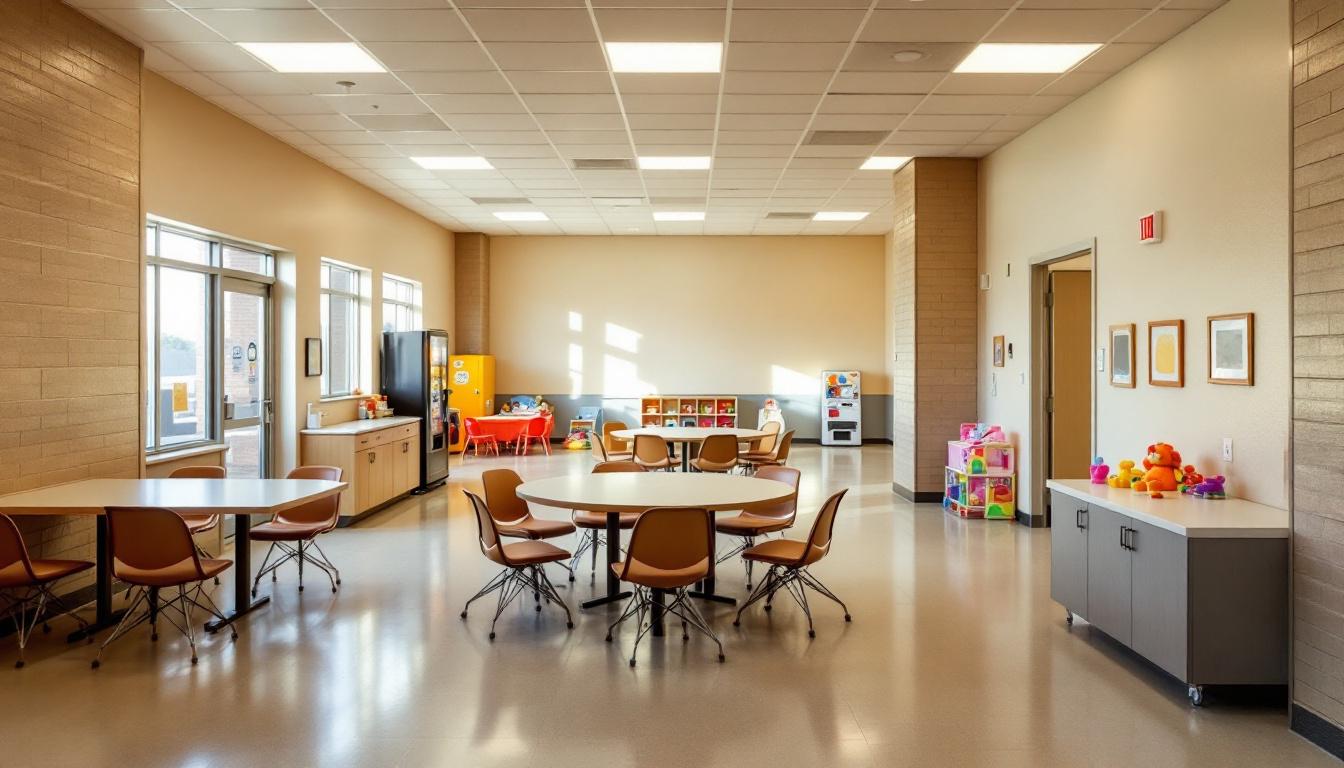
The Dodge County Detention facility operates on a structured visiting schedule that organizes family connections by inmates' last names, with specific time slots running from 9am to 11am and 7pm to 9pm throughout the week. Located at 216 W. Center Street in Juneau, Wisconsin, the facility maintains a staffed lobby from 8:00 am to 8:00 pm Monday through Friday, while visitors arriving at other times can access the vestibule intercom system. Inmates typically receive two personal visits per week, each lasting 30 minutes, with all visitor information requiring approval from a Program Specialist before visits can take place.
The facility maintains clear guidelines for family visits, allowing no more than two adults or groups of four people (such as two adults with two children) in visiting areas at once. All visitors aged 18 and older must present valid photo identification, while minors need to be accompanied by a parent or legal guardian unless they are married to the inmate. Professional visits from attorneys, law enforcement, clergy, and medical professionals may occur at any time for official business, providing inmates with necessary legal and spiritual support outside the regular visiting schedule.
Between visits, inmates likely follow typical correctional facility routines that may include scheduled meal times, recreational periods, and work assignments, though specific daily schedules would depend on the facility's operational procedures and security classification levels. The facility's communication policies and daily programming often aim to maintain connections with family members while ensuring security protocols are followed, creating a structured environment that balances safety requirements with opportunities for rehabilitation and family contact.
Ready to Connect?
Start communicating with your loved one today
Search for an Inmate
